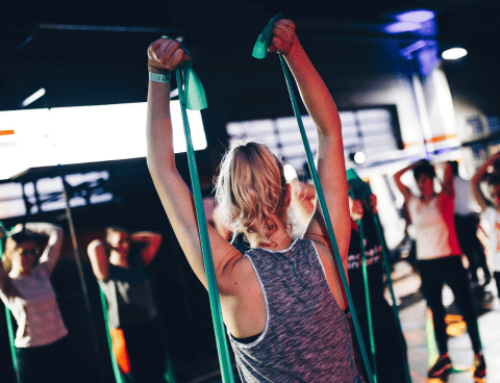Power Up Your Vert
The Vertical Jump Test is an assessment of your athletic ability—”an expression of your power output,” says UConn Huskies associate head strength coach Chris West. Collegiate and professional recruiters frequently use the Vertical Jump Test to assess explosiveness and athletic ability. In just one jump, coaches can tell a lot about an athlete’s speed, jumping ability and lower body strength and power.
Athletes can improve and prepare for the Vertical Jump Test by developing strength in the weight room and explosiveness with plyometric exercises.
Explosiveness
Full-body, ground-based lifts, such as Power Cleans and Squats, mimic the explosive movement patterns required to jump higher. The benefits of performing full-body lifts include increased lower-body power output, core strength development and recruitment of fast-twitch muscle fibers. Training the hips using exercises like Dumbbell Squat Jumps generates explosive power to jump higher.
Dumbbell Squat Jumps
Who’s doing it?
Chicago Blackhawks D Duncan Keith (Watch video of Duncan Keith improving his lower body explosive power for hockey).
Recommended by: Doug Crashley, Crash Conditioning director of athletic performance
- Begin in athletic stance holding light dumbbells at sides
- Descend into quarter-squat, keeping weight back on heels
- Explosively drive out of Squat and jump for maximum height
- Land in athletic stance with soft knees; reset and repeat
Sets/Reps: 2-4 sets of 4-8 reps
Coaching Point: Use 10 to 20 percent of body weight for resistance
Plyometrics
Plyos teach the body to rapidly put force into the ground, resulting in quicker, more powerful movements. When performed and used correctly, plyos are an explosive driver, helping to produce faster, more powerful and coordinated movements.
Dumbbell Box Jumps
Who’s doing it?
Portland Trailblazers G/F Brandon Roy
Recommended by: Travelle Gaines, director of elite athlete development at Athletes’ Performance
- Assume athletic stance holding dumbbells at sides, about an arm’s length away from plyo box
- Lower into quarter-squat, then explode through hips, knees and ankles to jump for maximum height
- Land softly with bent knees on top of plyo box
- Step down slowly; repeat for specified reps
Sets/Distance: 5×5 yards
Coaching Point: Perform first set with no weight, then gradually increase weight with each set.
RECOMMENDED FOR YOU
MOST POPULAR
Power Up Your Vert
The Vertical Jump Test is an assessment of your athletic ability—”an expression of your power output,” says UConn Huskies associate head strength coach Chris West. Collegiate and professional recruiters frequently use the Vertical Jump Test to assess explosiveness and athletic ability. In just one jump, coaches can tell a lot about an athlete’s speed, jumping ability and lower body strength and power.
Athletes can improve and prepare for the Vertical Jump Test by developing strength in the weight room and explosiveness with plyometric exercises.
Explosiveness
Full-body, ground-based lifts, such as Power Cleans and Squats, mimic the explosive movement patterns required to jump higher. The benefits of performing full-body lifts include increased lower-body power output, core strength development and recruitment of fast-twitch muscle fibers. Training the hips using exercises like Dumbbell Squat Jumps generates explosive power to jump higher.
Dumbbell Squat Jumps
Who’s doing it?
Chicago Blackhawks D Duncan Keith (Watch video of Duncan Keith improving his lower body explosive power for hockey).
Recommended by: Doug Crashley, Crash Conditioning director of athletic performance
- Begin in athletic stance holding light dumbbells at sides
- Descend into quarter-squat, keeping weight back on heels
- Explosively drive out of Squat and jump for maximum height
- Land in athletic stance with soft knees; reset and repeat
Sets/Reps: 2-4 sets of 4-8 reps
Coaching Point: Use 10 to 20 percent of body weight for resistance
Plyometrics
Plyos teach the body to rapidly put force into the ground, resulting in quicker, more powerful movements. When performed and used correctly, plyos are an explosive driver, helping to produce faster, more powerful and coordinated movements.
Dumbbell Box Jumps
Who’s doing it?
Portland Trailblazers G/F Brandon Roy
Recommended by: Travelle Gaines, director of elite athlete development at Athletes’ Performance
- Assume athletic stance holding dumbbells at sides, about an arm’s length away from plyo box
- Lower into quarter-squat, then explode through hips, knees and ankles to jump for maximum height
- Land softly with bent knees on top of plyo box
- Step down slowly; repeat for specified reps
Sets/Distance: 5×5 yards
Coaching Point: Perform first set with no weight, then gradually increase weight with each set.












